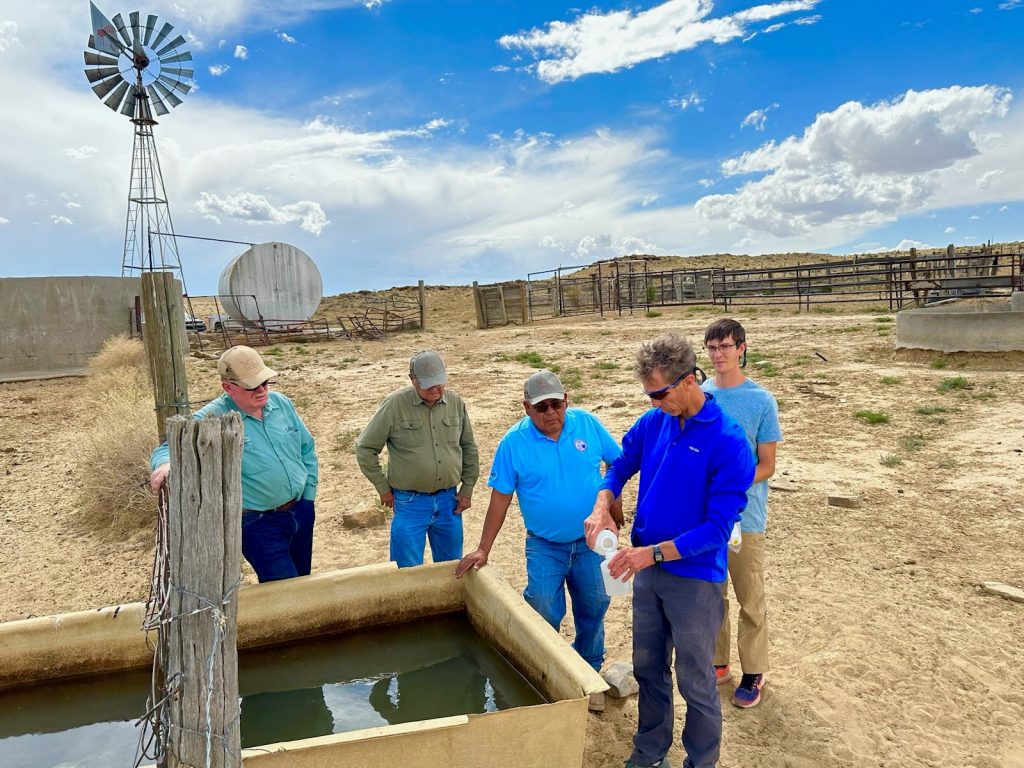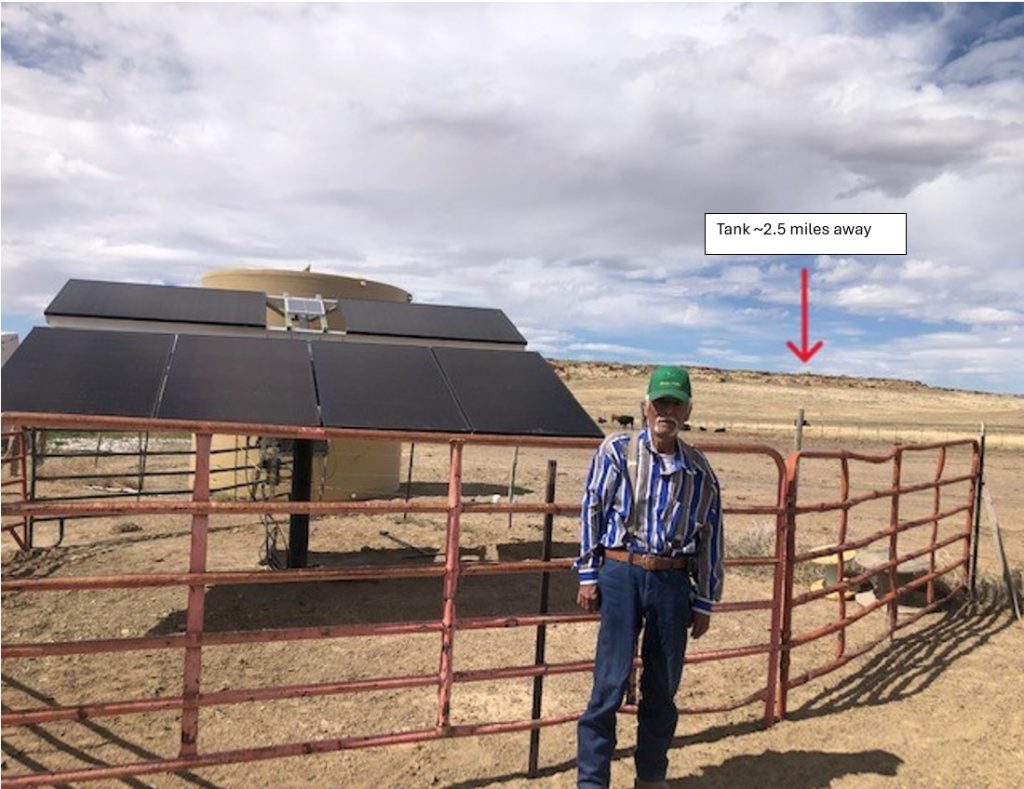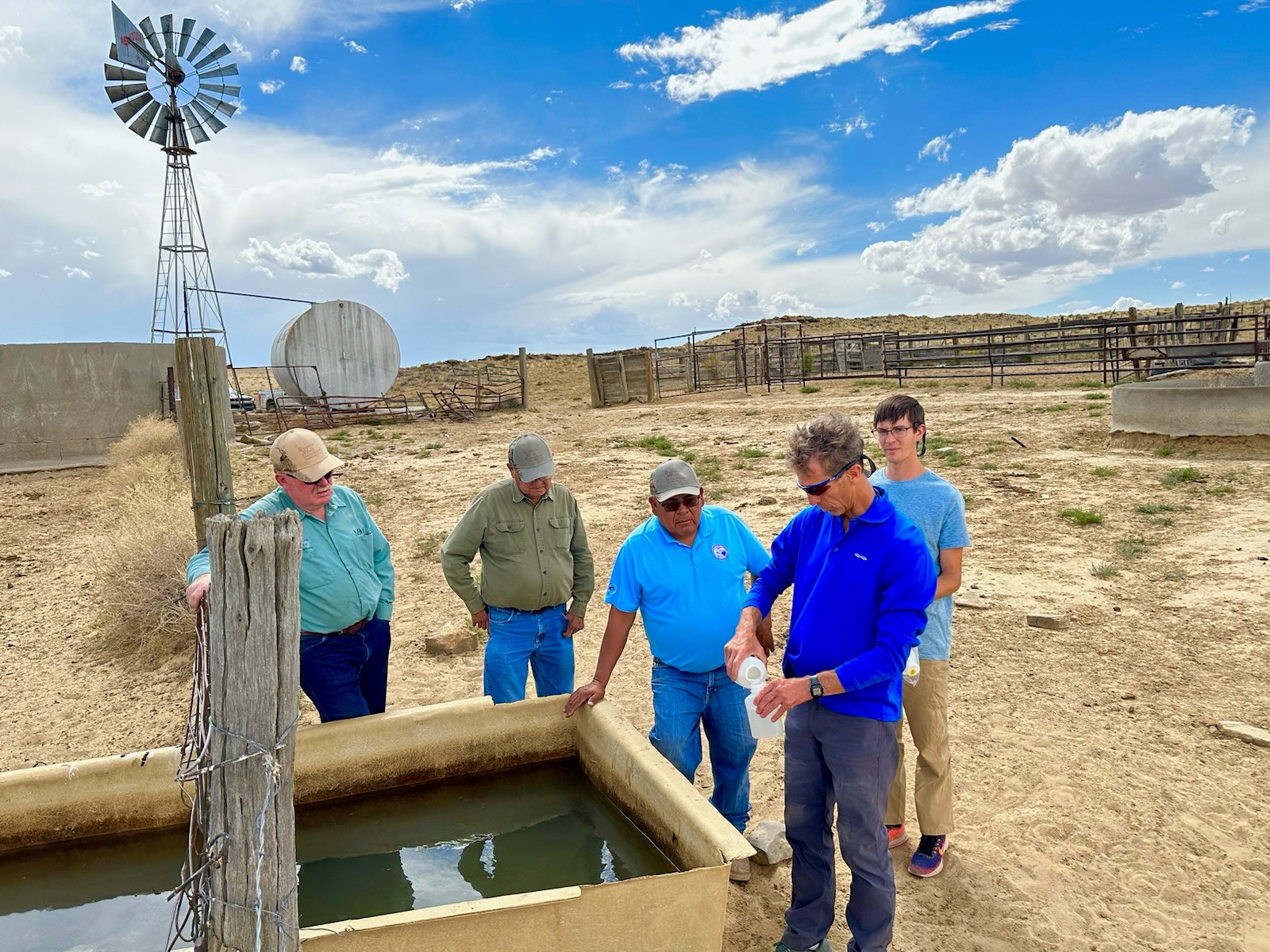
ALBUQUERQUE, N.M. — “They say water is life, and that couldn’t be truer,” said Anne Francis, who has spent her life on the Navajo Nation, watching how water sustains the land, the crops and the herds of cattle on her family ranch.
But life on the Navajo Nation is hard.
The vast landscape is dotted with old-fashioned windmills, and many places are untouched by modern conveniences like electricity. Without the right infrastructure, getting water where it needs to go has been a struggle for generations.
A new technology, developed in partnership with Sandia National Laboratories and New Mexico State University, is transforming that struggle into a sustainable solution.
“We only had one watering point, a tank with a constantly running pump,” Francis said. “Water often overflowed from the tank and went right back into the ground; it was a waste,” Francis said. “Then you had those poor cows, they had to walk miles and miles just to get water.”
It’s a challenge faced by most ranchers on the Navajo Nation. Animals typically stay near a water source if there is food, but with only one source, those areas become overgrazed. As a result, the cows have no alternative but to walk long distances, or the ranchers must haul water long distances to them.

Even with the extensive land and plentiful food, an absence of water makes it difficult for ranchers to sustain cattle in these areas. Former Navajo Nation Vice President Myron Lizer set out to solve this problem in July 2021.
After looking into several companies, Lizer partnered with Remote Well Solutions LLC, a business owned by Corina and Mike Lisk of Cloudcroft that had developed a promising technology.
“We own a ranch in Lincoln County and know water challenges firsthand,” Mike Lisk said. “We felt very motivated to solve this problem; not just for ourselves but for others with the same struggles. No one needed it more than our Navajo neighbors.”
With the help of Sandia and the NMSU Arrowhead Center, that technology was further developed, patented and embraced by Lizer and the Navajo Nation, becoming the focus of a pilot project in 2022.
“We’re taking what’s available with solar power right now and adding our technology to take it to the next level,” Lisk said.
Designing a solution
That technology is a simple controller, operated by wind or solar energy. No electricity or batteries required.

“We take the water that is being pumped and put it in a storage tank, we then distribute it through the landscape using our controller and a network of piping,” Lisk said. “It can detect the tiniest change in pressure from a tank as far as five miles away and makes sure to keep those tanks full automatically.”
Those tanks are all positioned at a high point so that the water flow can then be gravity fed and no more energy is required. It allows for drinkers to be set up every half mile throughout the ranch.
It’s a system that is changing the way these ranches operate. No more hauling water, no more driving long distances every day, and no more overgrazing.
It’s a project that is close to Lisk’s heart.
“I am a retired electrical engineer. I’ve worked on controls for my entire career, and we saw a need. I’ve lived in Farmington and Mountainair, and we’ve always been close to our neighbors on the Navajo Nation. The need out there is pretty obvious,” he said.
Small business, big impact

When Lisk was inspired with this idea, he realized he couldn’t implement it alone. That is when he turned to Sandia and the New Mexico Small Business Assistance Program for some help.
This program is designed to provide New Mexico small businesses facing technical challenges access to the unique expertise and capabilities of Sandia and Los Alamos national laboratories at no cost. Remote Well Solutions secured a grant and work began.
“This started out with them basically wanting Sandia to look over their shoulder to check their work,” said Brian Dwyer, a systems engineer at Sandia who lent his expertise to the project. “Sandia didn’t design this system but checked on what they were doing and validated it to make sure it made sense.”
Dwyer, who has a background in civil and environmental engineering has worked on other projects related to water and energy, making him a perfect fit.
“Some of our work involved testing for water quality and helping determine the best location for wells,” Dwyer explained. “The wells must meet a certain quality standard for livestock. Sometimes you have an area where two wells are within a mile of each other but only one meets water standards. In some cases, we figured out a system to blend the water, so it still meets standards, and both can still be utilized.”
Dwyer says the Sandia team also supported the system’s economic analysis conducted by the Arrowhead Center. That analysis found that the system, could at least double the number of cattle these ranches can sustain. A big reason the Navajo Nation has not adopted modern technology is because of the cost, but his system is an inexpensive solution.
To date, the team has installed four systems on the Navajo Nation with plans for more. The Navajo Nation has applied for a $25 million grant from the U.S. Department of Agriculture to pay for those additional systems.
Changing lives

In the meantime, their work is changing lives.
While it can be easy for some people to take water for granted because it is easily accessible from their faucets, this is not the reality for the Navajo people, some of whom still live without running water in their homes.
For Francis and others, this system not only makes the work manageable, but allows them to grow their ranches and make them profitable. For many years the Francis ranch could only sustain 45 head of cattle, now they have double the herd. Other ranchers expect to expand from 60 head to 300.
Francis got emotional as she talked about the project and her late husband Johny, who recently died.
“He never shared the whole story with me, he wanted to surprise me,” she said. “I didn’t get to see the system until after he passed. He had been working with the tribal ranch office for a long time to get this done.”
Francis, who is elderly, now depends on her daughter and son-in-law to run the family ranch. She said it couldn’t have come at a better time.
“They live in Los Lunas, so he comes out every weekend to check on things,” she said. “We have three grandboys, age 16-19, they come and help, but now they have to work less. I am so relieved I don’t have to worry about the cattle knowing they are cared for with water.”
Francis is not alone. Dwyer said the impact is obvious.
“I have been out there and met many of the people benefiting from this,” Dwyer said. “They are so grateful. I remember this older guy — he had to be 75 years old. After we installed the system and he saw what it could do, he started crying because he couldn’t believe it.”
“This is the most rewarding thing we’ve ever done,” Lisk said. “The person who benefits the most is the guy out on the ranch, the guy at the bottom. These people have been hauling water for generations. These are strong hard men who have been ranching for 50 years. When they start to get emotional, you know this is a good thing.”
The Remote Well Solutions and Sandia project received the 2023 Honorable Speaker Ben Luján Award for Small Business Excellence by the New Mexico Small Business Association. Each year, the organization awards one project that has had the greatest economic benefit. The awards ceremony was held on September 11.

